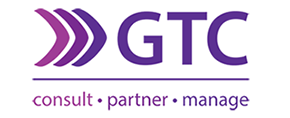Medical aid risk assessment: The oft-overlooked responsibilities in King III
Medical Aid Risk Assessment, by Jillian Larkan, Head of Healthcare Consulting at GTC
17 September 2015
South African companies are well acquainted with the concept of corporate governance and risk management, as succinctly outlined in the King III Report on Corporate Governance. This set of guidelines has become a standard for all businesses who take their reputation seriously, and it has undoubtedly contributed to the country consistently ranking tops among the world’s most compliant economies.
One aspect that may be overlooked by many, however, is a company’s roles and responsibilities with regard to the organisation’s chosen medical aid provider. The reason it tends to be overlooked is that it is not specified in King III, even though it clearly falls within the ambit of two important provisions in the code.
All too often the annual review of a medical aid provider and plans is discharged without sufficient consideration of some key elements contained in King III. This has implications for an organisation’s risk management, and specifically its stakeholder governance.
The first of these principles is contained within section 4 that deals with Risk Assessment and Monitoring.
The responsibility for this traditionally falls to the Risk Committee that is tasked with reducing a company’s risk to outside factors. A medical aid provider, as well as a service provider offering consultancy services, would address this requirement.
Considering the often complex nature of medical aid plans, it is good practice to establish a sub-committee within the Risk Committee to deal exclusively with medical aid matters.
In either event, it is incumbent on the company to ensure that the medical aid and service provider are able to provide suitable, sustainable and cost effective cover that appropriately manages employees’ health cover.
These considerations are in addition to the responsibility to compare costs and benefits annually and have a clear understanding of the medical aid’s ability to cover claims and meet costs. The company’s risk function is best suited to establishing the risk of the medical aid based on the cover being provided for the premium being paid, the pensioner ratio, solvency level and average age of the medical aid’s membership.
Developing these insights demands ongoing monitoring of the medical aid, which requires more than a cursory annual review. In our experience, the best results are obtained from regular meetings with the healthcare consultants, usually three to four per annum, to ensure that these risks are properly managed and understood.
With these basics in place, organisations can then turn their attention to Principle 8 in King III, which deals with Governance of stakeholder relationships.
It is important to recognise that this responsibility extends to employees as much as it deals with shareholders or service providers.
Building and maintaining trust with all these stakeholders requires effective and ongoing communication on findings in the healthcare risk assessments and monitoring processes. These results should be timely, relevant, accurate, honest and simple to understand. The end goals are to justify the action/inaction of the company and to elicit the support of employees for the final decisions made by the board on benefit designs or service providers.
It is clear from these points that the decision about an organisation’s medical aid provider and plans cannot be made in isolation from its overall governance structures or intent. The challenge for many companies lies in the complexity inherent in making the correct decision for a heterogenous workforce with diverse needs and circumstances.
Healthcare consultants, such as GTC, are optimally placed to cut through many of these complexities and are able to add considerable value to a company, particularly as a third-party, who is not only subject to governance processes, but who can also contribute to them. For example, the GTC Medical Aid Survey is an annual assessment and guide that assists employers gain a clearer understanding of which medical aid provider is best able to meet the assorted needs of a workforce.






